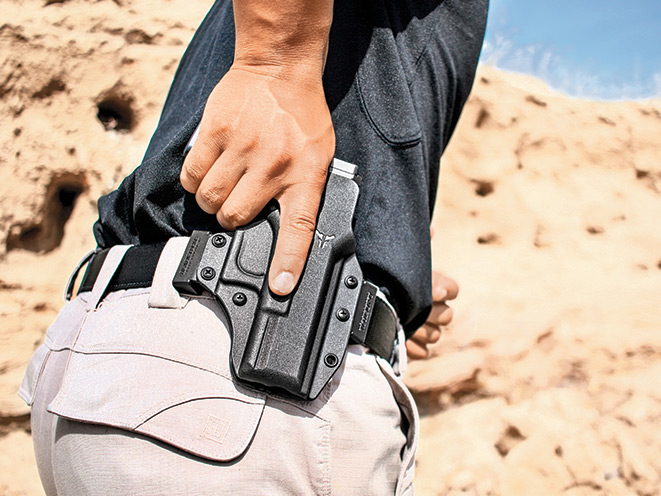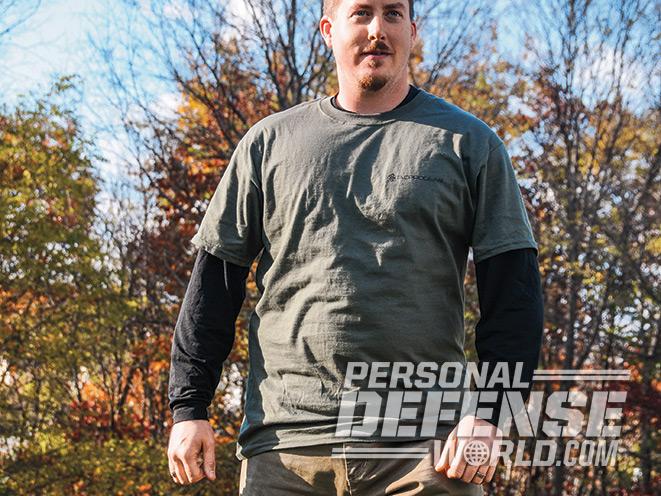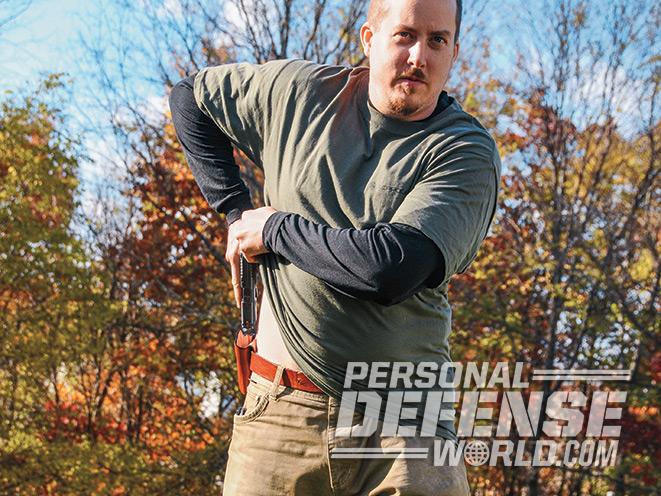We are only as good as our training, and only as prepared as our state of mental readiness. All the fancy gear in the world won’t help when the buzzer goes off or an attacker raises a crowbar if you can’t act swiftly, automatically and precisely every single time.
Shooting is a perishable skill. Like riding a bicycle, we never quite lose it. But unlike the gross motor skill of riding a bicycle, we quickly lose the edge that our instincts need to react swiftly and automatically. This drill and these best practices will help you master the draw, make your first shot hit and develop and retain that edge so you can win a gunfight.
The goal of developing your gun draw from concealment is to fire one accurate shot that strikes the center mass of your intended target at a combat distance. Plenty more shots can follow, but they will likely be increasingly less accurate, so make sure that starting point is a dead-center hit. For these drills, use standard IDPA or USPSA silhouette targets set 7 to 10 yards away.
Advertisement — Continue Reading Below
Now let’s work backward. That accurate shot needs to be fired from a modern and serviceable handgun that is properly aligned with your target at the moment of ignition. That alignment requires a firm and proper grip. That grip requires properly grasping the gun while it is still holstered. That holster needs to properly position and conceal your handgun. That concealment needs to be moved out of the way effectively, to expose your pistol for grasping. So let’s break down the draw in an easy step-by-step process.
That Right Holster
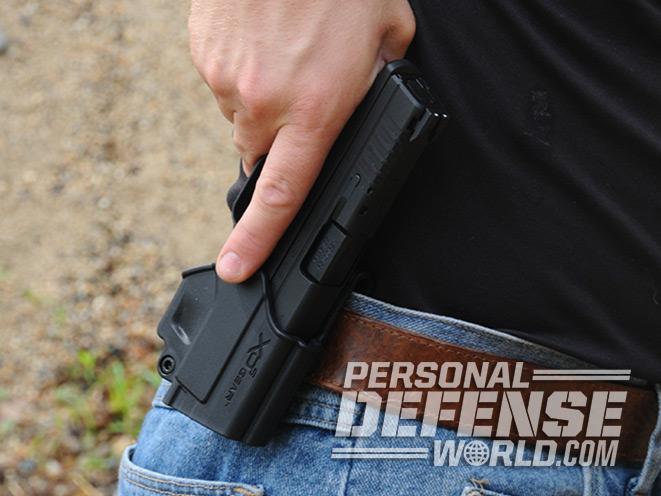
Advertisement — Continue Reading Below
Finding the perfect holster for your body and needs is an art, and a topic in and of itself. So far as the holster pertains to mastering the draw, your holster should position the grip of your handgun somewhere on your body that you can easily and ergonomically reach it from the widest range of body positions that you’re in throughout the day. This might mean from a sitting position in a vehicle or at a desk. Make sure the gun is positioned right and that the gun/holster combination is comfortable enough that you will actually wear it.
RELATED STORY: Everyday Carry – Versatile EDC Holster Options
Choose holsters that carry your pistol in such a manner that the muzzle doesn’t point at any part of your body, especially on the draw. Just in case. Next, choose a retention type fitting your needs—a Level I or Level II retention holster for open carry is a great idea. Most tuckable holsters offer only a friction fit to retain the gun during strenuous motion, and this seems, by and large, fine. Whatever holster you choose, drill with it every single time you go to the range.
Advertisement — Continue Reading Below
At the range, properly holster and conceal your unloaded gun while facing a proper target that’s against a proper backstop. Square up to your target and take a half step backward (with your right foot if you’re right-handed). Hang your hands at your side. Shake out your shoulders. Let your mind go blank. Now very slowly go through a proper draw by the numbers.
Taking Aim
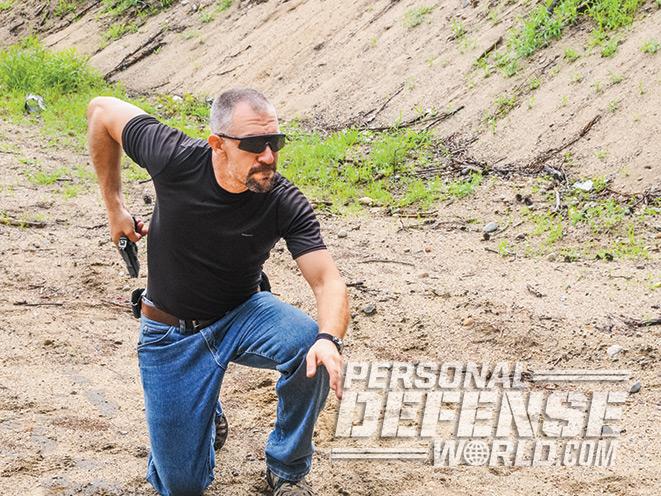
Step 1: Stare at center mass on your target, and keep your eyes there throughout the draw. Now grasp your shirt, near your gun, with both hands. Pull straight up, as high as your armpit. The exaggerated raising clears all the fabric away from your grip and your draw path, and it instills good instincts—not drawing it high enough in practice can lead to not drawing it high enough in a panic, then getting your gun tangled up. Always practice over-drawing your concealment.
RELATED STORY: Concealed Carry Gear – 12 Must-Have Items For Your Everyday Carry Kit
Advertisement — Continue Reading Below
Step 2: Let go of your concealment with your shooting hand while your other hand keeps holding it up. This is done to keep the draw path clear, and to keep that hand safe from being accidentally swept by your muzzle during the draw.
Step 3: Grasp your pistol firmly, with your finger extended along the side of your holster (or pants), right along the slide of the gun. Repeat these three steps until you get a firm, comfortable, repeatable grip every single time. Come back several times a session to just these first three steps. They’re that important.
Step 4: Quickly disengage any of your holster’s retention devices.
Advertisement — Continue Reading Below
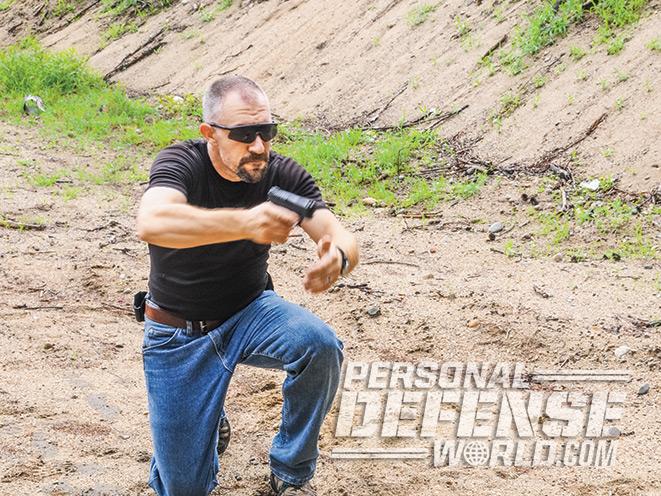
Step 5: Draw your pistol straight out of the holster, raising your shooting hand to that arm’s armpit while rotating the muzzle up to horizontal, so it points downrange. Your finger remains off of the trigger, firmly along the slide (or cylinder) this whole time. The end position is with your firing arm’s elbow down, the gun almost touching your shooting arm’s shoulder pocket, with the muzzle downrange and your finger off the trigger.
This keeps your muzzle pointed in a safe direction and keeps your gun close to your body, to inhibit attackers (or confused bystanders) from so easily grabbing it during your draw. You will be able to fire from this position if you must (if your attacker has closed to contact range). And with the gun close to your body, but pointing safely away from yourself, you make it harder for them to grab it and take control of it.
RELATED STORY: Perfect Pocket Draw – Quick-Draw Essentials
Advertisement — Continue Reading Below
Step 6: Your support hand should now finally let go of your concealment garment. Drive your pistol forward, straight towards center mass of your target, and bring your support hand out to meet it. The muzzle should be trained on center mass during its entire transition from high retention to the final aiming position, so that if you must fire before completing the draw, the muzzle is right on target the entire time.
Step 7: Lean slightly forward as you finish driving your gun towards the target. Load your weight slightly forward of center, onto your leading foot, so that the recoil energy of your shots has to move your whole body a few inches backward before disturbing your balance.
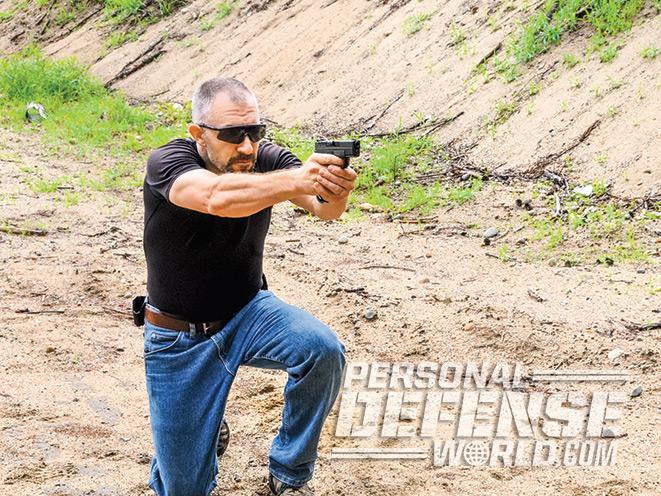
Step 8: Your ending position is with a firm two-handed grip, with your sights properly aligned on center mass, the pistol up to bear, with your feet planted firmly and your weight forward of center. Your finger is still not on the trigger—not until the very moment you intend to dry fire or shoot your target. From this position, you can fire multiple shots from a secure body position, as well as lunge forward or to either side.
Advertisement — Continue Reading Below
Step 9: Bring your eyes from the target to your front sight. Once it is aligned on center mass, pull the trigger.
RELATED STORY: 14 Best Double Stack Subcompact Pistols For Deep Concealment
Step 10: With your finger off the trigger and the muzzle downrange, bring your gun straight back until your wrists touch your chest. This is a high-retention ready position from which you can drive the gun forward again to engage another threat or reholster.
Advertisement — Continue Reading Below
Step 11: With your finger still off the trigger, let go with your support hand and raise your concealment garment. Drive that gun purposefully, but slowly, directly into your holster. Let go. Do not wander around with your gun in your hand or let it deviate from that flight path—it should only travel directly from the holster to high retention, then to bear, and back again. Pick an arbitrary number above 100 and tell yourself to repeat this drill that number of times.
Center Mass
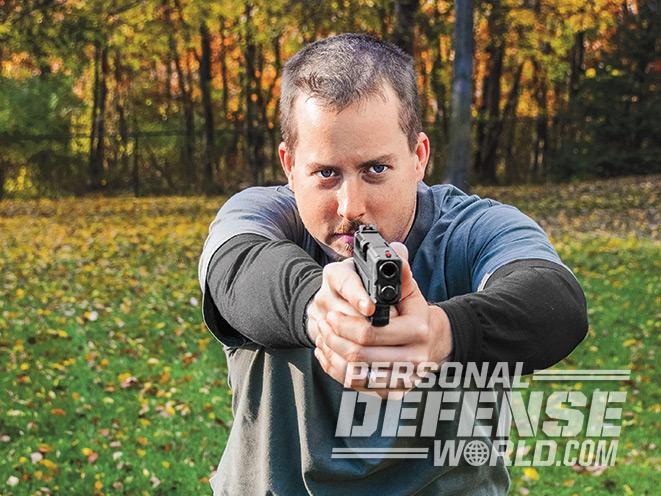
Assuming a reasonably accurate pistol with quality ammunition, your accuracy starts with your natural point of aim and the body position you’re in when you pull that trigger. Drill to bring your pistol to bear by the numbers so that its end point finds the sights properly aligned on center mass every single time you bring it up to bear. This will happen automatically with proper practice over time.
At first, however, run through the numbers, never taking your eyes from center mass of your target—where your eyes go, so too will the muzzle point. When your pistol is at full extension, refocus your eyes on the front sight. See where it is in relation to the rear sight and adjust accordingly. If it’s way off, try to figure out why. Is it a problem with your grip being either too high or low? Is there a problem with transitioning from one specific grip angle to another, like moving from a Glock to a revolver?
Most often a hasty grip is the culprit, and it can be fixed by slowing down the draw for a few repetitions until your hand naturally finds a comfortable, repeatable, proper grip on our handgun. Once you adjust the sight alignment for a center-mass hit, squeeze the trigger. Assess your hit. Return your handgun to the holster. Retuck. Repeat.
Go slowly at first through the drill, then speed up (safely) until the point when your first shot wanders out of the center zone on your silhouette target. Figure out why, slow down and smooth out the draw until your shots once again cluster within that zone.
Once you can run through this drill accurately about as fast as feels safe and reasonable, put a sticker in the center of your silhouette target. Focus on that sticker specifically and watch your groups instantly shrink. Focusing your attention on a specific point on a much larger target is another mind trick for shrinking groups. Now drill until you can hit that sticker reliably.
Sights Vs. Instinct
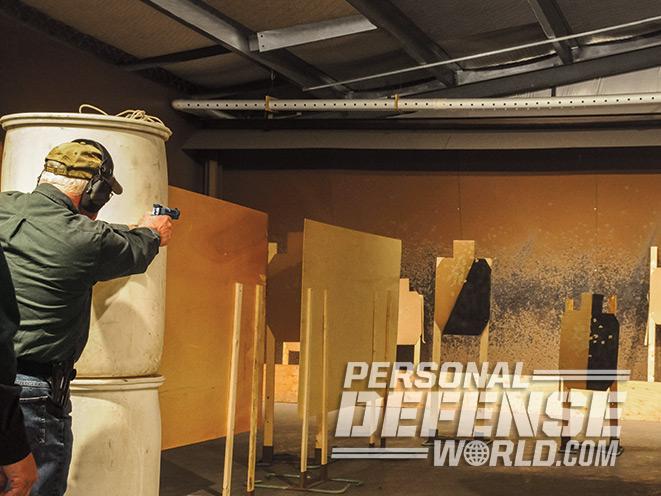
Somewhere along your training, you might start accurately shooting without diverting your eyes to the front sight. This is a habit that some instructors tell you to break immediately and to return your focus to that sight and that sight alone. Others say to embrace it and develop the point-shooting skill that takes over.
RELATED STORY: 5 Shooting Drills To Maximize Speed, Accuracy and Power
Point (instinct) shooting is a very advanced skill, and as such it is extremely perishable. Always drill with proper front sight awareness until it becomes such second nature that point-shooting instincts take over. You can return to forced front sight awareness for longer ranges, critical shots and to engage smaller portions of your target, but let instinct handle the rest at close range.
Skill Upgrade
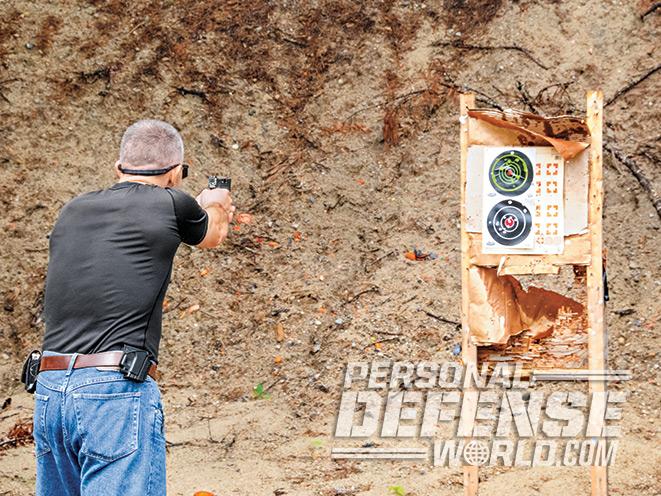
Start your range session with at least 10 cycles of dry-fire practice with your carry gun from your carry holster from full and proper concealment. End each range session with at least 10 dry-fire repetitions of drawing and dry firing at a proper target against a safe backstop. The first draw of the day shows you what shape your skills were in when you arrived. The last repetitions before you leave give your mind and muscles a primary touchstone to the motor skills they’ll need to call on should you need to draw your gun in self-defense. It’s best to have your most recent shooting motions be your defensive draw with your defensive gear.
RELATED STORY: Tactical Reloads – Retaining Your Ammo For The Next Fight
